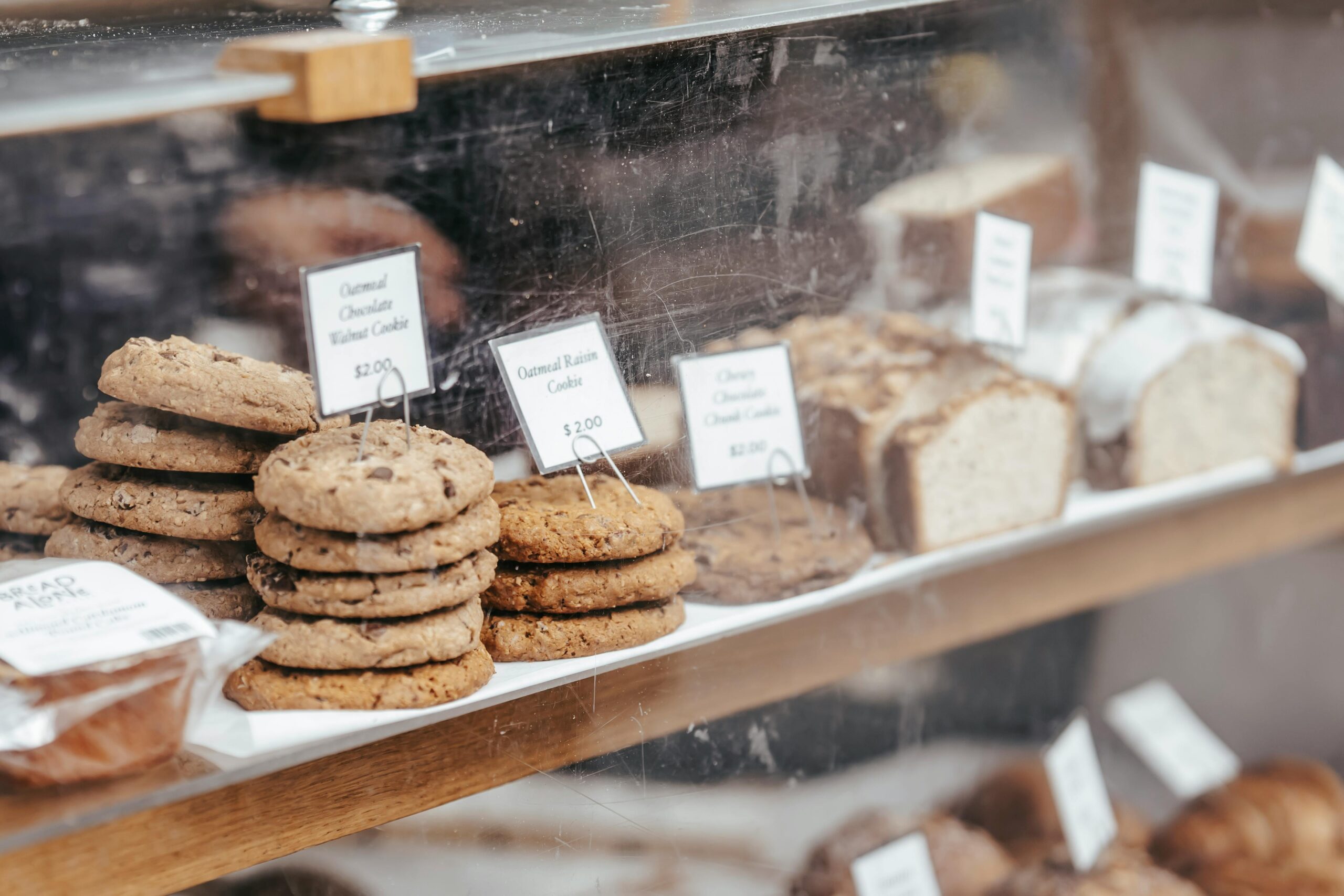The sugar price in Pakistan has been on a steady rise, leaving consumers and businesses alike wondering, why is it rising and what to expect next? In recent months, the surge in sugar costs has sparked widespread concern across the country, impacting everything from household budgets to large-scale food production. If you’ve been asking yourself, “What’s causing this sudden spike in sugar prices in Pakistan 2024?” you’re not alone. This article dives deep into the factors driving the increase, the economic repercussions, and expert predictions on future trends. So, buckle up as we unravel the mystery behind the soaring sugar costs and what it means for you!
One of the key reasons for the escalating sugar price in Pakistan is the combination of poor crop yields and increased demand domestically and internationally. Pakistan’s sugarcane production faced numerous challenges this season, including unfavorable weather conditions and pest attacks, which have led to a significant drop in harvest volumes. Additionally, government policies, such as export restrictions and fluctuating subsidy programs, have further complicated the market dynamics. These elements together have created a perfect storm, pushing prices higher than ever before. Have you noticed the price jump at your local market? It’s not just you; this trend is nationwide.
Moreover, global factors like rising raw material costs and inflationary pressures also play a critical role in the sugar market in Pakistan. With the country heavily reliant on sugar imports to meet demand, any disruption in international supply chains or currency depreciation can cause price volatility. So, what can consumers expect moving forward? Industry experts warn that unless immediate measures are taken to stabilize production and regulate imports, sugar prices could continue to climb, affecting everything from your morning tea to bakery goods. Stay tuned as we explore possible solutions and tips to cope with this ongoing challenge.
Top 7 Reasons Behind the Surging Sugar Price in Pakistan: What Every Consumer Must Know
Sugar price in Pakistan has been on a steady rise for months now, causing concern among consumers and businesses alike. Many people wonder why the cost of this everyday essential keeps climbing, making it a challenge for families to manage their budgets. The question on everyone’s lips is, “Why is sugar price in Pakistan rising and what to expect next?” This article aims to uncover the top 7 reasons behind this surge, helping consumers understand the factors at play and what might come in future months.
1. Poor Sugarcane Crop Yield
One major cause of rising sugar price in Pakistan is the poor yield of sugarcane crops during recent harvest seasons. Due to erratic weather patterns and prolonged droughts in some provinces, farmers faced difficulties growing enough sugarcane to meet demand. When crop production falls short, the supply of sugar decreases, pushing prices upwards. For example, in Punjab and Sindh, where most sugarcane is grown, the output was estimated to be 15-20% less than previous years, directly impacting sugar mills’ ability to produce sugar.
2. Increased Cost of Production
The cost involved in producing sugar has also increased significantly. This includes higher prices of fertilizers, pesticides, and fuel required for farming and processing. Transportation costs have gone higher too, especially with rising fuel prices globally. These expenses eventually get transferred to the final sugar price in Pakistan. A sugar mill owner once mentioned that the input costs have skyrocketed by almost 30%, which they can’t absorb without increasing the selling price.
3. Export Demands and Policies
Pakistan’s sugar is not only consumed domestically but also exported to neighboring countries. When international demand spikes, local sugar prices tend to rise since exporters might buy large quantities at higher prices. At times, government policies about sugar export quotas or restrictions also affect availability in the domestic market. For example, if exports are encouraged without balancing local needs, sugar scarcity happens locally, leading to price hikes.
4. Currency Devaluation Impact
The devaluation of the Pakistani Rupee against the US Dollar put additional pressure on sugar prices. Since many raw materials, machinery parts, and chemicals used in sugar production are imported, a weaker rupee means that importing these goods becomes more expensive. This cost again trickles down to the consumer. Over the past year, the rupee has lost substantial value, making imports pricier and thus inflating sugar production costs.
5. Hoarding and Black Market Activities
Unfortunately, hoarding by some traders and sugar mill owners have worsened the situation. By holding back sugar stocks intentionally, they create artificial scarcity in the market to push prices higher. This illegal practice leads to price volatility and uncertainty for everyday consumers. Authorities have at times stepped in to seize hoarded stocks, but the problem persists in various regions of Pakistan.
6. Seasonal Demand Fluctuations
Sugar prices also changes with seasons and festivals. During Ramadan and Eid, sugar consumption goes up due to increased preparation of sweets and desserts. This seasonal rise in demand can cause temporary price spikes. Similarly, colder months usually see higher tea consumption, indirectly increasing sugar demand. These fluctuations add complexity to the sugar pricing scenario in Pakistan, making it hard for consumers to predict stable prices.
7. Inefficient Supply Chain and Distribution
The supply chain from sugar mills to retail stores is not very efficient in Pakistan. Delays, poor storage facilities, and transportation bottlenecks often lead to wastage or shortage at various stages. This inefficiency adds to the overall cost, which retailers then pass on to customers. If the sugar supply chain was streamlined, it could help control unnecessary price increases and make sugar more affordable for everyone.
To better understand the sugar price situation, here is a simple comparison table showing sugar price changes over recent years in Pakistan:
| Year | Average Price per Kg (PKR) | Notable Factor |
|---|---|---|
| 2019 | 60 | Stable crop yield |
| 2020 | 65 | Minor supply disruption due to floods |
| 2021 | 75 | Currency devaluation starts |
| 2022 | 85 | Increased production cost & hoarding |
| 2023 | 105 | Poor crop yield & high export demand |
As the table shows, sugar price in Pakistan has more than doubled in just a few years. This trend is worrying for consumers who rely on sugar daily.
Practical example: A typical family that used to spend about 600 PKR per month on sugar now finds themselves paying nearly 1,050 PKR for the same quantity. This affects their overall grocery budget and forces them to cut back on other essentials.
What should consumers expect next? Given the current situation, it is likely that sugar prices will remain high or even rise further unless significant steps are taken by the government and industry players. Measures like improving sugarcane farming techniques, cracking down on hoarding
How Government Policies Are Impacting Sugar Price Fluctuations in Pakistan in 2024
Sugar price in Pakistan has been a hot topic throughout 2024, catching the attention of consumers, traders, and policymakers alike. Many people wonder why the sugar price in Pakistan keeps rising, and what government policies have to do with these fluctuations. This article try to unpack how government decisions impact sugar prices, why sugar prices are so unstable, and what might come next for consumers in Pakistan.
Why Sugar Price in Pakistan Is Rising?
There are multiple reasons why sugar price in Pakistan have been increasing, but government policies play a significant role in this situation. First, Pakistan is one of the largest consumers of sugar in the world, and the demand keeps growing every year. However, the production of sugarcane, which is the main raw material for sugar, has not been consistent due to various factors including weather conditions, pests, and farmers’ choices. When production dips, sugar prices naturally go up.
Another critical factor is the government’s regulation of sugar supply through controlling imports and exports. For example, in early 2024, the government imposed restrictions on sugar exports to ensure domestic supply. While this might sound beneficial for local consumers, it sometimes creates unintended consequences, like traders hoarding sugar to wait for prices to rise, which further inflates the price.
Government Policies Impacting Sugar Price Fluctuations
The role of government in sugar price fluctuations cannot be overstated. Some policies meant to stabilize the market sometimes do the opposite. Here are some key government interventions affecting sugar prices:
- Import Tariffs and Restrictions: High import duties on sugar are meant to protect local farmers and sugar mills. But when local production falls, these tariffs make imported sugar expensive, pushing retail prices higher.
- Export Bans and Quotas: To secure enough sugar domestically, government often restrict exports. But this reduces the incentive for mills to produce more sugar, because they can’t sell it abroad at potentially better prices.
- Price Controls: Sometimes government sets maximum retail prices for sugar. While this is intended to keep sugar affordable, it can create shortages as suppliers reduce quantity supplied at lower prices.
- Subsidies and Support for Farmers: The government offers subsidies on fertilizers and seeds to sugarcane farmers. However, inconsistent or delayed support affects planting decisions, impacting sugarcane harvest and therefore sugar production.
- Monitoring and Anti-Hoarding Measures: Authorities try to curb hoarding by tracking stockpiles and penalizing traders. But enforcement remains challenging, so black market activities still influence price swings.
Historical Context of Sugar Prices in Pakistan
Sugar prices in Pakistan have always been volatile, but the scale of fluctuation have increased recently. In the last decade, sugar prices have gone through several sharp rises and falls. For instance, in 2018, sugar prices spiked due to droughts that reduced sugarcane output. In 2020, despite COVID-19 disruptions, the prices remained relatively stable due to government importing sugar to meet demand.
Here is a simple chart showing approximate sugar price trends in Pakistan over recent years:
| Year | Average Sugar Price (per kg in PKR) |
|---|---|
| 2018 | 80-85 |
| 2019 | 70-75 |
| 2020 | 65-70 |
| 2021 | 75-80 |
| 2022 | 90-95 |
| 2023 | 100-110 |
| 2024 | 120-130 (estimated) |
This table shows how prices have generally been rising, reflecting both supply challenges and policy impacts.
Comparison With Other Countries
Sugar price fluctuations is not unique to Pakistan, but there are differences in how other countries handle it. For example:
- India, one of the largest sugar producers, often offers export subsidies to mills and has a minimum support price for sugarcane, which helps stabilize farmer incomes but sometimes increases sugar prices domestically.
- Brazil, the world’s largest sugar producer, benefits from large-scale mechanized farming and efficient supply chains that reduce price volatility.
- In contrast, Pakistan’s sugar industry is more fragmented, with many small farmers and mills, making coordinated policy implementation difficult.
What Consumers Can Expect Next?
Given the current government policies and market conditions, sugar price in Pakistan may continue to experience fluctuations in 2024. Here are some possible developments:
- If the government increase sugar imports or reduce tariffs, prices could stabilize or even decrease slightly.
- On the other hand, if export restrictions stay in place and hoarding persists, prices might rise further.
- Weather conditions will also play a big role. A good sugarcane harvest season could bring relief to consumers.
- Government may introduce new measures like better monitoring of sugar stocks or targeted subsidies to farmers to improve production.
Practical Tips for Consumers Facing Rising Sugar Prices
For households worried about the increasing sugar prices, here are some practical tips:
- Buy in Bulk When Prices are Low: Stocking up during price dips can save money.
- **
Is the Rising Sugar Price in Pakistan a Temporary Spike or a Long-Term Trend? Expert Insights
The sugar price in Pakistan has been on a rollercoaster ride lately, leaving many consumers and businesses puzzled about what to expect next. Is this a short-lived hike caused by temporary factors, or are we witnessing a long-term trend that will reshape the market? The question is on everyone’s mind, and expert insights shed some light on this complicated issue. In this article, we will explore why sugar price in Pakistan is rising and what the future might hold.
Why Is Sugar Price in Pakistan Rising?
Several reasons contribute to the rising sugar price in Pakistan. Some are temporary, others structural. Here are the major factors:
- Supply Chain Disruptions: Due to recent floods and extreme weather, sugarcane production has declined in key provinces like Punjab and Sindh. This lower yield reduced the raw material available for sugar mills.
- Increased Production Cost: The cost of fertilizers, fuel, and labor has gone up sharply over the past year. Sugar mills have to pay more to process the same amount of sugarcane.
- Government Policies: Export restrictions and price controls sometimes create market imbalances. When the government limits sugar exports to keep domestic prices low, it can discourage mills from producing more.
- Import Dependency: Pakistan often imports sugar to meet demand, but international sugar prices have been volatile. Currency depreciation makes imports costlier.
- Inflation and Currency Devaluation: The weakening Pakistani rupee against the US dollar makes every imported good, including sugar, more expensive.
These factors combined have created a perfect storm that pushes sugar prices upwards.
Historical Context of Sugar Pricing in Pakistan
To understand if the current spike is temporary or permanent, it’s useful to look back at sugar price trends in Pakistan. The sugar market here has been historically volatile. For example:
| Year | Average Price per Kg (PKR) | Notes |
|---|---|---|
| 2018 | 60-65 | Stable prices, good harvest |
| 2019 | 65-75 | Slight rise due to export ban |
| 2020 | 70-85 | COVID-19 disruptions affected supply |
| 2021 | 80-90 | Increased production costs |
| 2022 | 90-110 | Floods and inflation impact |
From this data, it’s clear that sugar prices do fluctuate yearly, often influenced by environmental conditions and government interventions.
Expert Views: Temporary Spike or Long-Term Trend?
Experts from agricultural economics and market analysis sectors have shared mixed opinions about the sugar price trajectory.
- Dr. Ahmed Raza, Agricultural Economist: “The recent price hike is partially temporary due to floods and pandemic-related disruptions. Once the next harvest season arrives, and supply stabilizes, prices should ease. But rising input costs are a concern for long-term sustainability.”
- Ms. Fatima Khan, Market Analyst: “We are seeing a structural shift because energy prices and import costs are unlikely to fall soon. Sugar prices may remain elevated compared to previous years, but wild fluctuations will reduce as market adjusts.”
- Industry Insider: “Government policies must be consistent. Frequent changes in export and import rules confuse mills and traders, which leads to price instability.”
What To Expect Next? Practical Insights
If you wondering what to expect in the coming months, here are some practical points to consider:
-
Sugarcane Harvest Seasons
The main harvests occur twice a year:- October to December (Rabi)
- February to April (Kharif)
A good harvest in the upcoming season could increase supply and moderate prices.
-
Government Interventions
Monitoring government decisions on export bans or subsidies is crucial. If the government encourages exports, it might tighten domestic supply. -
International Sugar Market
Global sugar prices and currency exchange rates will continue influencing local prices. Any sudden shock in these areas can ripple through Pakistan’s market. -
Inflation Trends
If inflation persists or worsens, it will keep upward pressure on sugar prices since production inputs cost more.
Comparison Between Pakistan and Neighboring Countries
To put things in perspective, here is a simple comparison of sugar prices (approximate) in neighboring countries as of mid-2024:
| Country | Price per Kg (Local Currency) | Price in USD (approximate) |
|---|---|---|
| Pakistan | 110 PKR | 0.38 USD |
| India | 40 INR | 0.48 USD |
| Bangladesh | 50 BDT | 0.58 USD |
While Pakistan’s sugar price is competitively lower in USD terms, in local purchasing power, it is quite high for consumers. Also, India and Bangladesh have large domestic production that helps stabilize prices.
How Rising Sugar Price Affects Consumers and Businesses
Higher sugar prices impact different segments in
The Role of Import Challenges and Supply Chain Issues in Pakistan’s Increasing Sugar Prices
The sugar price in Pakistan has been rising sharply over recent years, causing concern among consumers, traders, and policymakers alike. Many people wonder why sugar prices in Pakistan keep increasing and what factors are driving this trend. One of the major reasons behind this surge is the import challenges and supply chain issues that the country faces. This article explores the role of these factors in Pakistan’s rising sugar prices and tries to shed light on what we might expect in the near future.
Understanding the Sugar Market in Pakistan
Pakistan is one of the largest producers of sugar in Asia, but it still depends on imports to meet domestic demand. The sugar industry in Pakistan is seasonal, with production peaking during the crushing season from November to March. However, several issues disrupt the smooth supply of sugar throughout the year. Historically, sugar prices in Pakistan have shown volatility because of factors like government policies, weather conditions, and market speculation.
The country’s sugar consumption is growing steadily due to population increase and changing consumption patterns. According to the Pakistan Bureau of Statistics, the average sugar consumption per capita has increased over the last decade, pushing demand higher than local production can sustainably satisfy.
Import Challenges Impacting Sugar Prices
Pakistan’s sugar industry faces a lot of import-related problems that affect prices directly. When local production falls short, the government allows sugar imports to stabilize the market. But several factors make importing sugar difficult and expensive:
- Foreign exchange shortages: Pakistan has been facing persistent foreign currency shortages, making it harder for importers to pay for sugar shipments.
- High import duties and taxes: Import tariffs on sugar increase the landed cost, pushing prices higher for consumers.
- Delays at ports: Congestion and inefficiencies at Karachi and other ports cause delays that disrupt supply chains.
- Regulatory hurdles: Complex licensing and approval processes add to the time and cost of importing sugar.
- Global price fluctuations: The international sugar market is volatile, and price spikes abroad directly impact import costs.
These import challenges create uncertainty and reduce the availability of sugar in the local market. When sugar imports slow down or become more expensive, traders raise prices to cover their costs, which ultimately hits consumers.
Supply Chain Issues Aggravate the Problem
Besides import difficulties, the domestic supply chain in Pakistan suffers from many issues that contribute to rising sugar prices. The supply chain includes farmers, sugar mills, wholesalers, and retailers, and inefficiencies at any stage can increase costs:
- Inefficient transportation: Poor road infrastructure and high fuel prices make it expensive to move sugar from mills to markets.
- Storage problems: Lack of adequate storage facilities leads to spoilage and wastage, reducing available supply.
- Middlemen influence: Multiple intermediaries add their margin, increasing the final price.
- Seasonal production: In off-season months, limited sugar availability forces reliance on stockpiles or imports.
- Power shortages: Frequent electricity outages affect sugar mill operations, reducing production capacity.
All these supply chain issues add layers of costs and risks. For example, if sugar cannot be transported timely due to fuel price hikes or road damage, the scarcity drives prices up. Similarly, poor storage conditions mean that sugar stock may deteriorate, forcing mills to produce more or importers to bring in additional supplies at higher costs.
Historical Context of Sugar Prices in Pakistan
Sugar price fluctuations in Pakistan are not new. Over the last two decades, several periods of sharp price increases have occurred, often linked with crop failures or policy changes. For instance:
- In 2010-2011, heavy floods damaged sugarcane crops, leading to shortages and price surges.
- The government’s ban on sugar exports in some years was aimed at controlling prices but sometimes backfired by reducing farmer incentives.
- In 2020, the COVID-19 pandemic disrupted supply chains globally, increasing sugar prices locally due to import delays.
Through these examples, it becomes clear that Pakistan’s sugar market is sensitive to both domestic production issues and global supply chain dynamics.
What To Expect Next?
Given the persistent import challenges and domestic supply chain problems, the sugar price in Pakistan is unlikely to stabilize soon without major interventions. Some factors that could influence future prices include:
- Government policy: Reduction in import duties, easing of regulatory processes, and support for local farmers may help.
- Improvement in foreign exchange availability: More stable currency reserves can facilitate sugar imports.
- Investment in supply chain infrastructure: Better roads, storage, and mill modernization will reduce costs.
- Global sugar market trends: If international prices remain high, imported sugar will stay expensive.
- Weather conditions: A good sugarcane crop season can ease pressure on prices.
Comparison of Sugar Price Trends (Last 5 Years)
| Year | Average Price per kg (PKR) | Import Volume (Metric Tons) | Key Reason for Price Change |
|---|---|---|---|
| 2019 | 70 |
What Will Happen to Sugar Prices in Pakistan Next? Predictions and Tips for Buyers in 2024
Sugar prices in Pakistan have been a hot topic for many months now, leaving consumers and businesses worried about what will happen next. The price of sugar in Pakistan has gone up sharply recently, and many people ask, why is it rising and what can we expect in 2024? This article tries to break down the reasons behind the surge, what experts predict about future prices, and gives some tips for buyers who want to save money or avoid losses.
Why Sugar Price in Pakistan is Rising?
Several factors has led to the increase in sugar prices across the country. Some are related to local production issues, while others linked with global market trends.
-
Supply and Demand Imbalance
Pakistan faced a lower sugarcane production this year due to unfavorable weather conditions like drought in some regions and floods in others. When the supply of sugarcane drops, the sugar mills cannot produce enough sugar to meet the demand, pushing prices upward. -
Government Policies and Export Restrictions
The government sometimes imposes bans or restrictions on sugar exports to keep more sugar inside the country. While this help local consumers, it also disrupts the market dynamics, causing price fluctuations. Additionally, changes in sugar support prices for farmers can increase production costs. -
Rising Input Costs
Costs for fertilizers, fuel, and labor have been increasing, raising the overall cost of sugarcane farming and sugar production. This increment gets passed to consumers in the form of higher sugar prices. -
Global Market Influence
Sugar prices worldwide have been volatile, affected by changes in major producers’ outputs like Brazil and India. Since Pakistan sometimes imports sugar to meet local demand, international price hikes influence the local market too.
Historical Context of Sugar Prices in Pakistan
Sugar prices in Pakistan have always shown some level of volatility. In past years, prices have risen sharply during bad harvests or when government interventions happened suddenly. For example:
- In 2018, sugar prices jumped when a sugar export ban was lifted unexpectedly.
- In 2020, COVID-19 related supply chain disruptions caused temporary shortages.
- The year 2023 saw a mix of low production and high global prices that caused one of the biggest price surges in recent memory.
This history shows markets can be unpredictable, and prices can shoot up or come down rapidly depending on many factors.
What Will Happen to Sugar Prices in Pakistan Next?
Predicting exact sugar prices is difficult because many variables change quickly. However, experts and market watchers have shared some expectations for 2024:
-
Moderate Price Stabilization Expected
With government plans to increase sugarcane support prices and encourage farmers to grow more sugarcane, production might improve. This could help balance supply and demand and stabilize prices somewhat. -
Potential For Price Fluctuations Remain
Weather uncertainties such as possible floods or droughts in 2024 could again affect sugarcane yield, causing price spikes. Also, global sugar market variations will continue to impact local prices. -
Government Interventions Will Play Big Role
Any new export restrictions or subsidies could either reduce or increase prices unexpectedly. Monitoring government policies will be important for buyers and sellers. -
Inflation and Currency Value Effects
Inflation in Pakistan and depreciation of the Pakistani Rupee against the dollar can make sugar imports more expensive, indirectly pushing local sugar prices higher.
Tips for Buyers in 2024
For households, retailers, and businesses who rely on sugar, here are some practical tips to manage the impact of rising sugar prices:
-
Buy in Bulk When Prices Are Lower
If possible, purchasing sugar in larger quantities during price dips can save money in the long run. -
Consider Alternative Sweeteners
Using jaggery, honey, or artificial sweeteners occasionally could reduce sugar consumption and cost. -
Compare Prices Across Markets
Sugar prices may vary from one city or market to another, so checking prices before buying can help find better deals. -
Stay Updated on Government Announcements
Following news related to sugar policies will help anticipate price changes and plan purchases accordingly. -
Use Sugar Efficiently
Reducing wastage by measuring sugar properly during cooking or manufacturing can stretch your supply further.
Sugar Price Trends Comparison: Last 5 Years
| Year | Approximate Price per Kg (PKR) | Key Factors |
|---|---|---|
| 2019 | 70-75 | Stable production, moderate demand |
| 2020 | 85-90 | COVID-19 disruptions, supply chain issues |
| 2021 | 90-95 | Increased input costs, inflation |
| 2022 | 95-110 | Poor harvest, export restrictions |
| 2023 | 120-130 | Global price hikes, weather issues |
This table shows how prices have gradually increased, with a steep rise in
Conclusion
In conclusion, the fluctuating sugar prices in Pakistan have significantly impacted both consumers and producers, highlighting the complex interplay of supply chain challenges, government policies, and market demand. Factors such as inconsistent sugarcane production, import regulations, and seasonal variations have contributed to price instability, affecting household budgets and the overall economy. The government’s role in regulating prices and ensuring fair trade practices remains crucial to stabilizing the market and protecting vulnerable populations from sudden price surges. Moving forward, a more transparent and efficient supply chain, along with support for local farmers, can help mitigate these challenges. Consumers are encouraged to stay informed about market trends and advocate for policies that promote affordability and sustainability. By addressing these issues collectively, Pakistan can work towards achieving a more balanced sugar market that benefits all stakeholders and supports economic growth.









